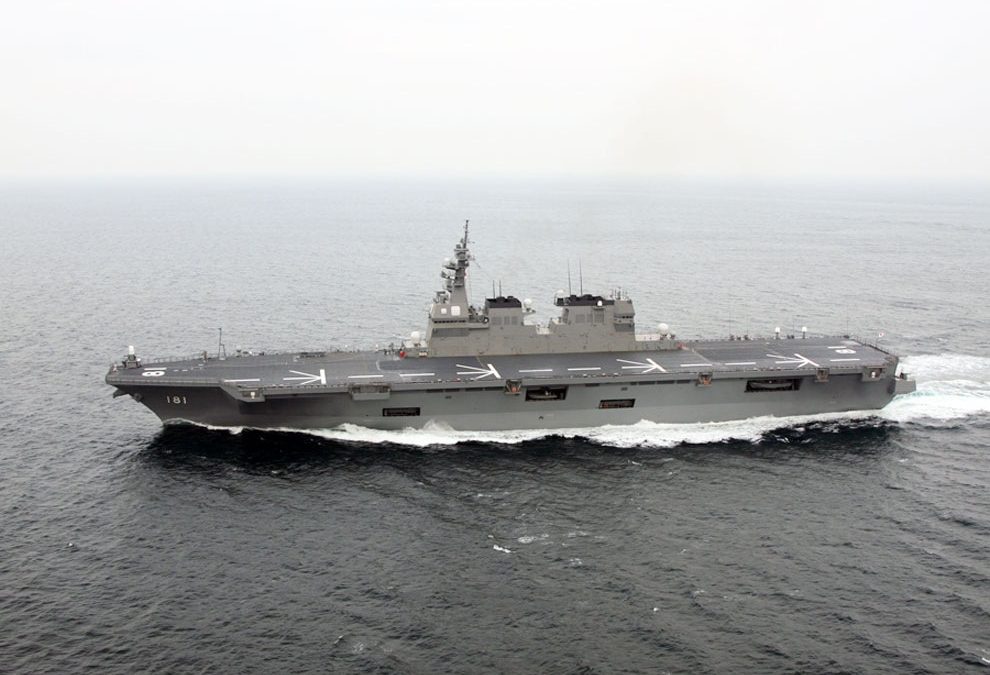
Obama Navigates Human Rights in Asia
November 27, 2009
Heated exchange: Tuvalu forces China’s hand at Copenhagen
December 18, 2009By: Project 2049 Institute |
On November 23rd, Japanese media reported that the Maritime Self-Defense Force (MSDF) is planning a 248m long helicopter destroyer – DDH22 – which will be the largest of its kind with a displacement of 19,500 tons. Equipped with a full-length flight deck, it will be able to transport up to 14 helicopters, 4,000 people and 50 trucks.
Japanese officials say the ship will help refuel other vessels, transport personnel and equipment, and conduct surveillance of surrounding waters. Beyond this, some observers also predict that such a destroyer will allow Tokyo to “project its influence and military force†beyond surrounding waters and the wider region to protect its interests and secure global lines of communication. These interests include supporting natural disaster relief operations and international peacekeeping missions, and perhaps even more ambitious future activities modeled on Japan’s recent participation in UN-authorized counter-piracy operations off the Somali coast in line with Japanese Prime Minister Yukio Hatoyama’s principle of “yuai†(fraternity).
Furthermore, some media sources are speculating that the acquisition is at least partly directed at China’s increasing presence in the East China Sea and training exercises around the disputed Senkaku Islands. Earlier this year, the Ministry of Defense concluded that Japan’s defense posture against potential incursions by surrounding nations was “inadequateâ€. However, one destroyer will only be a dent in Japan’s naval capabilities vis-à -vis China’s rapid military buildup.
The destroyer has undoubtedly reignited media and public debates over Japan’s naval posture. In accordance with its post-war pacifist constitution, Japanese law presumably prohibits the possession of aircraft carriers since they are deemed to “exceed the war potential needed for a minimal level of self-defenseâ€. Yet the Japanese media has already raised concerns that the new destroyer “looks like an aircraft carrier†and numerous bloggers have compared the design of the DDH22, as well as its Hyuga-class predecessors, to the British Invincible and Italian Cavour class aircraft carriers.
Even so, this development does not signal a substantive naval buildup. The DDH22 is intended as a replacement to the decommissioning of five Shirane-class destroyers, thereby reducing the size of MSDF’s overall force. Furthermore, the ship lacks potential offensive capabilities, like a ski-jump ramp which would allow it to be deployed as a light aircraft carrier. The Defense Ministry has also specified the destroyer’s mission scope and offensive limitations, insisting that “the ship will be incapable of having fighter jets land on and take-off from the deckâ€.
Nor does it portend a significant shift in Japan’s military ambitions. Even in a more uncertain and complex post-Cold War security environment amidst crises such as the wars in Iraq and Afghanistan, Japan’s capabilities have so far been increasing only incrementally. Though Tokyo plans to commission an additional destroyer in the future, enduring domestic pacifism and mounting budgetary constraints indicate that one should not expect a major military buildup anytime soon.




